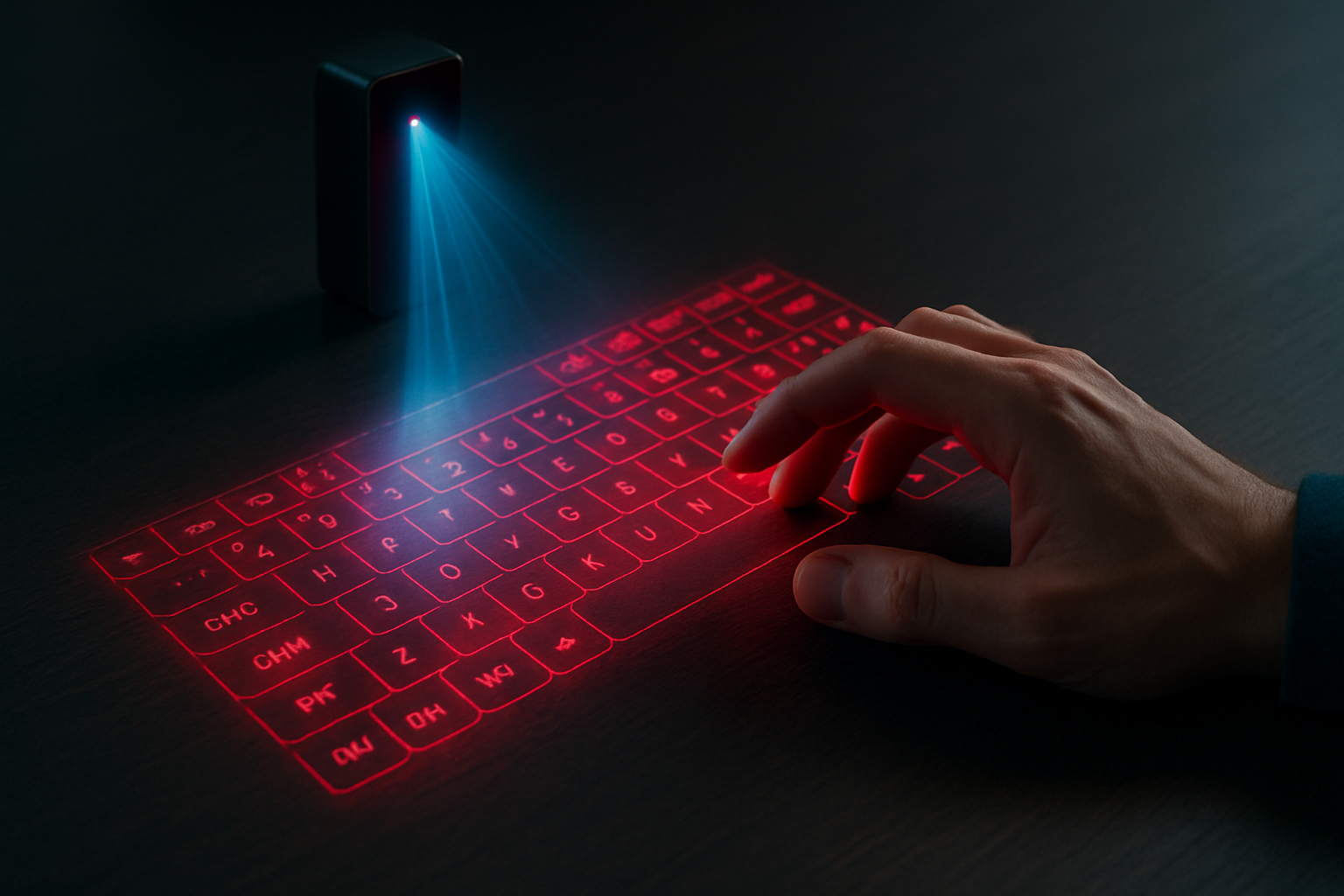Holographic Keyboards: Typing in Thin Air
In a world where technology continues to push boundaries, holographic keyboards are emerging as a fascinating frontier in human-computer interaction. These futuristic input devices project a virtual keyboard onto any flat surface, allowing users to type without physical keys. As we delve into this cutting-edge technology, we'll explore its potential to revolutionize how we interact with our devices and the challenges it faces in becoming mainstream.

This technology relies on precise calibration and advanced algorithms to accurately detect finger movements and distinguish between intentional keystrokes and accidental touches. The result is a ghostly, glowing keyboard that responds to touch despite having no physical form.
A Brief History of Virtual Input
The concept of virtual keyboards isn’t entirely new. Touch-screen keyboards have been around for decades, but holographic keyboards take this idea to a new dimension. The first commercially available holographic keyboard, the Celluon Virtual Keyboard, hit the market in 2002. Since then, various companies have experimented with the technology, refining its accuracy and expanding its potential applications.
Advantages in a Compact Package
One of the primary advantages of holographic keyboards is their portability. When not in use, the entire system can be condensed into a small projector device, making it ideal for travelers or those with limited desk space. This compact form factor opens up possibilities for integration into smartphones, tablets, and other mobile devices, potentially eliminating the need for separate keyboard accessories.
Challenges and Limitations
Despite their futuristic appeal, holographic keyboards face several hurdles in gaining widespread adoption. The lack of tactile feedback can make typing less intuitive and potentially slower for users accustomed to physical keys. Additionally, the technology’s reliance on flat surfaces limits its versatility in certain environments.
Accuracy remains another significant challenge. While advancements have improved detection algorithms, holographic keyboards still struggle with precision compared to their physical counterparts. Environmental factors such as ambient light and uneven surfaces can further impact performance.
The Future of Holographic Input
As the technology continues to evolve, we’re likely to see holographic keyboards integrated into a wider range of devices. Some concept designs envision holographic displays paired with these keyboards, creating fully virtual workstations that can be set up anywhere.
The potential applications extend beyond traditional computing. Imagine holographic controls in automotive dashboards, allowing drivers to interact with their vehicle’s systems without taking their eyes off the road. In medical settings, holographic interfaces could provide a sterile input method, reducing the risk of contamination.
Market Impact and Pricing
Currently, holographic keyboard devices are largely niche products, with prices ranging from $100 to $300 for standalone units. As the technology improves and manufacturing scales up, we can expect these costs to decrease. Industry analysts predict that the global market for holographic display technologies, including keyboards, could reach $5.5 billion by 2024.
The impact on the traditional keyboard market remains to be seen. While holographic keyboards are unlikely to replace physical keyboards entirely, they could carve out a significant niche in mobile and specialized applications.
A Glimpse into the Future
Holographic keyboards represent a tantalizing glimpse into the future of human-computer interaction. While they still face challenges in replicating the efficiency and tactile satisfaction of physical keyboards, their potential for portability and integration into various devices makes them a technology worth watching.
As we continue to push the boundaries of what’s possible in computing and user interfaces, holographic keyboards stand as a testament to our ongoing quest to make technology more seamless and intuitive. Whether they become a ubiquitous input method or remain a niche solution for specific use cases, holographic keyboards are sure to play a role in shaping the way we interact with our digital world in the years to come.





